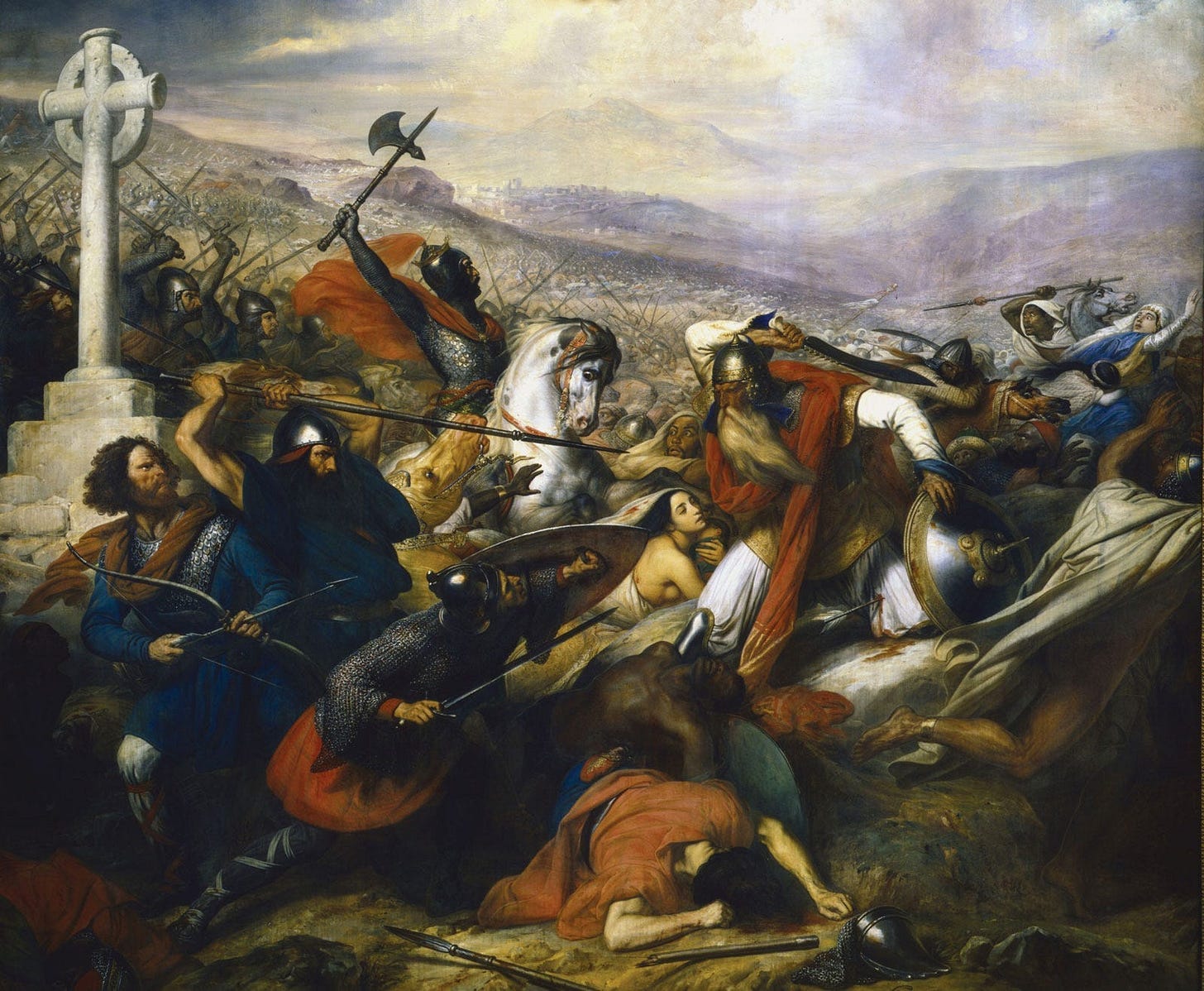World roundup: October 10 2025
Stories from Israel-Palestine, Cameroon, Peru, and elsewhere
TODAY IN HISTORY
October 10 (maybe), 732 (again maybe): A Frankish Merovingian army under Mayor of the Palace and de facto ruler Charles Martel (namesake of the future Carolingian Dynasty) defeats an invading Arab-Berber army at the Battle of Tours (Poitiers) in what is today western France. Not terribly much is actually known about this battle, at least not that can be disconnected from the legends that grew up around it. In the European consciousness Martel would be credited with saving Latin Christendom from certain annihilation at the hands of a massive conquering Islamic army. Contemporary historians question whether the army was really all that massive and whether its aim was really conquest or just raiding and pillaging.
October 10, 1911: An uprising in the city of Wuchang (which is now a part of the city of Wuhan) led by the Tongmenghui movement leads to the Xinhai Revolution. It ended in February 1912 with the toppling of the Qing Dynasty and the formation of the Republic of China. This marked the end of thousands of years of imperial Chinese rule. Commemorated today in Taiwan as the National Day of the Republic of China.
MIDDLE EAST
ISRAEL-PALESTINE
After a final flurry of Israeli bombing, the newly agreed ceasefire went into effect in Gaza at noon local time on Friday. The Israeli military (IDF) has reportedly withdrawn to the positions outlined under the first phase of the ceasefire agreement and that has allowed “tens of thousands” of people to return to whatever remains of their homes in battered Gaza City. Israeli officials have already issued multiple warnings regarding certain “no-go” sites in Gaza (including its territorial waters) and seem prepared to fire on any Palestinians who approach their new positions. The IDF remains in direct control of 53 percent of Gaza after this first withdrawal, and the imposition of what sounds like a buffer zone around its positions effectively expands the area under its control by an unknown amount—unknown both to outsiders and to Palestinians, who risk straying into kill zones that have not been clearly delineated. The overall picture is that the IDF may very well continue killing people in Gaza but it will do so under the guise of defending itself.
Keep reading with a 7-day free trial
Subscribe to Foreign Exchanges to keep reading this post and get 7 days of free access to the full post archives.


